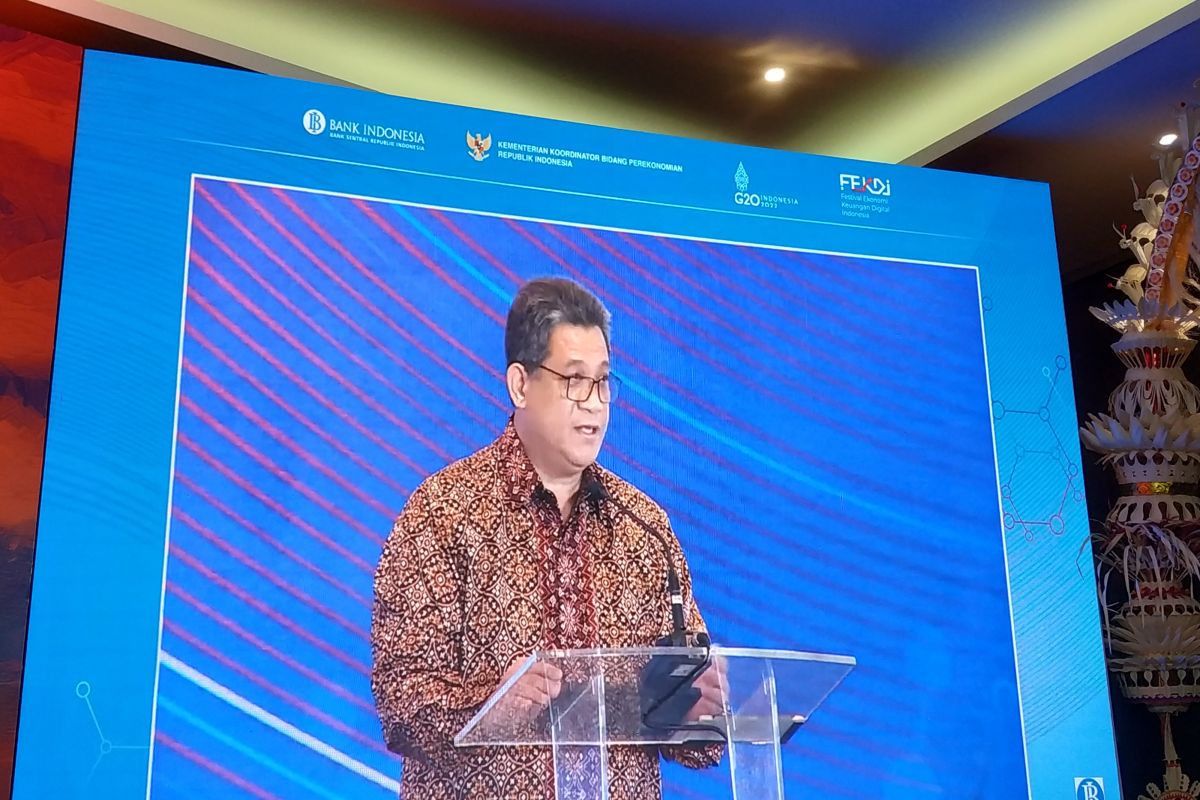Thus, the issuance of CBDC should not harm monetary and financial stability.Jakarta (ANTARA) - Deputy Governor of Bank Indonesia (BI) Doni Primanto Joewono said that he expects the central bank digital currency (CBDC), which is still being developed, to increase capital market growth by aiding payment access and financial inclusion.
"Thus, it will help encourage business opportunities and (financial) policy transmission," he explained at a side event of the Indonesian G20 Presidency entitled “2022 Indonesia Digital Financial Economics Festival (FEKDI): Advancing Digital Economy and Finance” in Badung district, Bali province, on Tuesday.
While there are opportunities for implementing CBDC in the Indonesian financial system, there will also be several risks to realizing it, he said.
Hence, the central bank will invite inputs from financial industry actors on the development of the CBDC.
It is hoped that the inputs would help develop the CBDC quickly along with conventional and electronic money.
Related news: Govt, BI unveil National Economic Synergy Movement, Digital Finance
BI is currently working on developing the CBDC, which will be called “digital rupiah,” to provide the public financial sovereignty, support the central bank's mandate regarding the digital economy sector, as well as increase financial innovation and efficiency.
In the near future, BI will bring out a white paper and a consulted paper before issuing the CBDC.
The BI deputy governor said that the development of the CBDC must balance the digital currency design and the applicable policies to reduce financial risks.
Related news: BI lists three challenges to nationwide rupiah distribution
"Thus, the issuance of CBDC should not harm monetary and financial stability. It should support the fulfillment of the central bank's mandate and provide benefits to (finance) commodities," he added.
Based on BI’s review of digital currencies issued by central banks in other countries, there are three important principles that need to be considered while designing a CBDC, he noted.
The first is that the design of a high-level CBDC must not disrupt monetary and financial stability in domestic and cross-border use.
The second principle is that the design of a CBDC must be integrated, interconnected, and harmonious with the existing payment system. The third principle concerns the establishment of a technology platform that can enable the issuance and circulation of the digital currency.
Related news: CPMI issues report on international framework for cross-border payment
Related news: Some 18.7 million merchants, users registered to use QRIS: BI
Translator: Agatha Victoria, Uyu Liman
Editor: Fardah Assegaf
Copyright © ANTARA 2022












